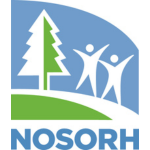By: Beth Blevins
Bringing people together to learn from one another is the goal of collaboration—a goal that’s being achieved in Rural Health Summits held across Vermont.
At the request of the Vermont State Office of Rural Health and Primary Care (VT SORH/PC), leaders from rural hospitals and local public health district offices have co-convened the Rural Health Summits to explore better ways of sharing resources, information, and priorities.
“The summits give us an opportunity to get on the ground in local communities and talk with folks who are doing the actual work of rural health,” said John Olson, VT SORH/PC Chief. “We hear about their challenges, their successes, and how we can identify opportunities for collaboration.”
The two-hour summits are hosted at local hospitals and involve 20 to 40 representatives of health and social service agencies in the county or hospital service area, Olson said. “They usually take place during the standing meeting time of the local Community Health Team or similar community-wide health service coordination group, and involve additional partners,” Olson said.
Those partners have included hospital CEOs, CFOs, and CMOs; Community Health Team members including primary care practices, case managers, and social services like housing, food banks, transportation, aging, etc.; and, other health providers including EMS, home health and long-term care agencies, FQHCs, RHCs, and Free Clinics, Olson said.
The core of each summit is the hospital’s Community Health Needs Assessment (CHNA), focusing on its process, work plan, and progress, Olson said. But attention is also given to public health topics like population health, and to sharing information on rural health resources from state, federal, and national partners. After the formal meeting, there are small group discussions with hospital leaders and, if times permits, individual meetings and tours of the hospital or local primary care practices, Olson said.
Additionally, a shared lunch with local partners allows for more informal discussions and networking. At one such luncheon, Olson said, local leaders were able to discuss how they could work together to resolve the problem of increased demand for mental health services in the local emergency department (ED). “The CEOs of the FQHC and mental health agency talked about the bottleneck between the hospital’s ED and the State psychiatric hospital with empty beds,” he explained. “They were able to identify certain policies that prevented the use of short-term beds and services at the local mental health agency, which might be resolved by legislative action.”
Since August 2015, two to three summits have been held each year, with plans for them to continue, Olson said. “We have eight CAHs and five mid-size rural hospitals, and we plan to do three to four summits each year,” he said. “We have prioritized the locations by turnover in hospital CEOs and/or District Directors, so we can introduce ourselves and resources to new leadership. The only expense is our time and our mileage, which we pay for using a combination of Flex and SORH money.”
“For many local partners,” Olson said, “these summits are the first time they have heard about CHNAs or resources available from the State and HRSA (Health Resources and Services Administration). We definitely hope that relationships between local partners and state partners will be strengthened, and that new collaborations will be formed.” Anecdotally, Olson said, the summits have been successful, but the Office plans to implement an evaluation process for them in the coming months.
While the summits provide a networking opportunity for local participants, Olson said, they also offer benefits for those who attend from Vermont State Department of Health offices. “My colleagues from the Central Office have enjoyed the opportunity to be in local communities and learn how our programs work together to impact them,” Olson said. “We get to meet leaders of many local healthcare and social service providers, as well as make better connections between programs at the state and local levels.”
The collaboration often begins before the meetings even start. “We have great conversations in the car ride there, and typically meet for coffee before we start the day to see what we can get out of this and what we can learn from each other,” he said. “It gives us an additional opportunity to collaborate across programs and with our local public health colleagues.”
Does your SORH have a “Promising Practice”? We’re interested in the innovative, effective and valuable work that SORHs are doing. Contact Ashley Muninger at to set up a short email or phone interview in which you can tell your story.
De registrieren wie einen essay schreiben und die autorin olago beauftragen
